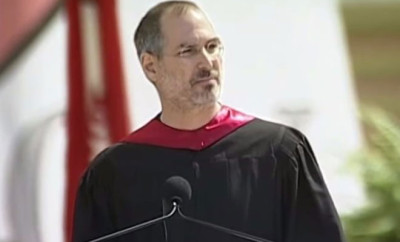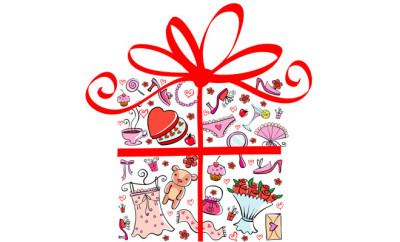
Are you up for the challenge of your life?
Do you know what the biggest challenge is for those who want to actualise their highest and best? At the first of this year (2007) I began conducting a series of workshops on the theme of actualising your highest and best. To get attention, I chose the audacious title, “The Ultimate Self-Actualisation Workshop.” And since presenting it in the USA, Australia, South Africa, Mexico and ready now to take it to Europe, I’ve been encountering many people who find that there is one facet of it that’s very challenging.
Now whilst there are many challenges to the process and experience of actualising your highest visions and your best potentials, there is one challenge that uniquely lies at the heart of self-actualisation. It is a factor that is, for lack of a better word, so challenging that many people, if not most, cannot take it on and face it. And it is such a critical facet of the process of actualising human potentials itself, that it is one of the key leverage points which determine whether a person will or will not self-actualise.
- What is this challenge?
- Why do we find it so challenging and often turn away to prefer living mediocre lives than face it?
- What resources do we need to be able to face this challenge and move on to full self-actualisation?
The Challenge
To describe this challenge accurately so that it makes sense, I will begin with a description of what it means to self-actualise. The process of actualising your highest potentials and possibilities and to creating the best version of you is the very process of becoming a person, that is, becoming real in the sense of becoming truly authentic. This is how Carl Rogers spoke about it and he wrote a book that he titled, “Becoming a Person.”
Now to become a person, a human being, to become fully alive as a human being, a fully functioning human being who is real, open, and authentic — which is the vision of self-actualisation, is to face and conquer the challenge of inauthenticity. It is to face the challenge of self-deceptions and self-delusions. And this is the biggest challenge of all— being real.
It is much easier to hide behind a role, a mask, to play the roles that we find ourselves in and to follow the script of those roles, than to know ourselves and to be real. And of course, the problem with playing a role is the power of habituation. This refers to how our role can become so familiar, so habitual, that we lose ourselves and our identity to a role and mistakenly identify with it. Then we can’t tell the difference. And to the extent that we have identified with the role, we lose more and more contact with our real self. We become alienated from our real self and know ourselves only in terms of what we do, the roles we play, and the scripts that we carry out. And as this continues, we experience deeper and deeper levels of self-delusion, so that we really don’t know who we are and actually become incapable of telling ourselves or anyone else the truth.
“I’d prefer a Mediocre Life”
- So what is the story about preferring to settle down to a comfortable life of living behind a role, than face the truth of our self-delusions?
- Why would anyone do that?
- What prevents us from owning and speaking the truth, so that we can confront the self-delusions and move on to being authentic as we self-actualise?
The problem is indeed the comfort, familiarity, and ease of the mediocre life. It is too easy, too comfortable. It does not include the demandingness of knowing oneself, confronting oneself with the truth, and facing up to what’s real and making changes. Plus, the delusions may be really wonderful, even glorious. I’d rather know myself as competent, confident, skilled, highly valued and acknowledged, important, knowable about almost everything, etc, rather than the reality. And for most people, the life of comfort and familiarity wins out.
With mediocrity, at least we are “normal” and “average.” With it we are, at least okay and don’t have to encounter our truth and change the way we have been thinking, feeling, or responding. Yet we humans are not made for living behind masks, roles, in mediocrity, or in self-deception. We are made for self-actualisation.
Resources for Facing Self-Delusion
The good news is that there are resources. To face this challenge, there are powerful resources for enabling us to actualise our true and authentic selves. What are these? The following are the key ones we use in the workshop to facilitate the transformational process that we call the crucible.
1 The most important resource is giving yourself “unconditional positive regard” and thereby attribute to yourself unconditional value, esteem, and worth as a human being. Without this, your sense of value will be on the line and so you will not feel safe to look at yourself, let alone change, grow, or develop. Here, knowing that you are more than your thoughts, feelings, actions, experiences, interpretations, and so on, frees you from over-identifying yourself with such.
Valuing yourself as having inherent worth and being a somebody who doesn’t have to prove anything, frees you from striving to make yourself something. You can now relax in knowing that you are okay in yourself. You are not broken, damaged goods, evil, or depraved. And when this knowing becomes your felt sense, then you can freely look at the ways you express yourself; all of your fallible ways of thinking, feeling, speaking, acting, etc. without fear. You’re safe to be fallible because you are ultimately valuable.
2 Other resources for looking at your fallible self with clear eyes and without deception, involve the states of non-judgmental awareness and acceptance. You can see-and-see without needing to cover up flaws and imperfections.
You, like the rest of us, are an imperfect being, always will be, and that’s your glory. This is what enables you to grow. To develop. You’d be in a sorry state if you could not develop any further. “Perfection” would be the end of growth.
3 In this, the power of simply accepting is pure magic.1 This does not refer to resignation. It refers to welcoming what is and inviting it into your world with a simple nod and a simple acknowledgment that it exists. And after you accept what is, you can then begin to cope with it. Without acceptance, you are still in the fight against it, rejecting it, condemning it, wishing it would go away. Acceptance ends the fight and begins the coping strategy.
4 Another resource is curious exploration. With self-value solidly in place, and an attitude of awareness and acceptance, now you can begin the adventure of exploration, wherein you come to the place where you “know thyself.” And it is an exploration. You have to try numerous things, go down various paths, give yourself to multiple tasks and learning’s, in order to find out through trial and error what fits and what does not, to learn what accords with your inner nature and what does not. And to know what aptitudes and talents you lack, are just as important as knowing what your aptitudes are. Often we have to go through a process of eliminating many of the possible options before we try the one that fits for us.
5 Another resource is commitment to self and to truth. If a person is not committed to the truth, to reality, to finding and facing what is and the way reality actually works, he or she will not. In this sense, truth comes at a cost. And the price for it is commitment. Given the way beliefs work as self-fulfilling prophecies, if a person beliefs in some identity, role, etc. more than commitment to the truth, then that’s what he or she will see and find.
6 A final resource I’ll mention here and one central to coaching, is that of the accurate empathy of another person who mirrors back to you the reality that he or she experiences from you. This kind of sensory-based feedback that is precise, accurate, and empathetic (non-judgmental) is so rare that most people have never actually experienced it. What we typically experience is judgment: evaluations, advice, opinions, projections, hallucinations, and mind-reading. To stand before another person who simply and purely mirrors back so we operate like human bio-feedback and this is almost magical. It is magical because we can then see ourselves more accurately and like standing before a bathroom mirror, simply make corrections and adjustments without any fuss.
Facing Self and Moving up to Self-Actualisation
It is then, with all of these resources, that we are able to then begin the encounter with self and the search for our truths. This is not truth with a capital T. It is rather the truths of our lives, the truths about our actual aptitudes, talents, dispositions, opportunities, possibilities, etc., and even the truths about our lack of skills and the things that we consider our weaknesses. These are the truths that we must encounter for true self-knowledge, self-awareness, and self-acceptance. Only then can we move on to self-appreciate for our strengths, gifts, and opportunities and self-esteem for ourselves as human beings.
And with that you can be free to be yourself. You develop the inner freedom to be yourself and to express your authenticity. And that’s the heart of actualising your highest and your best.
End Note:
1. In a previous issue of Actualise there is an entire article on this, the title is, The Magic of Acceptance.







